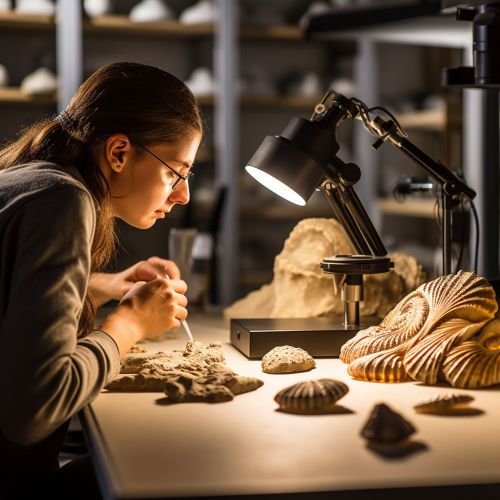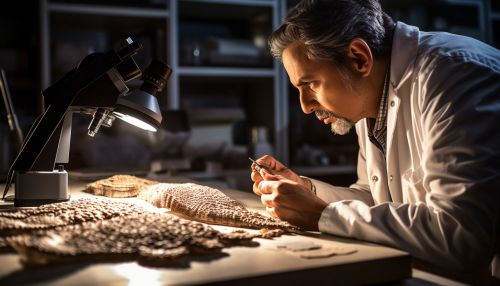Molecular Paleontology
Introduction
Molecular paleontology is a branch of paleontology that uses molecular biology techniques to study ancient life forms. It involves the analysis of genetic material, proteins, and other biomolecules from fossil remains to understand the evolutionary history of extinct organisms and their relationships with extant species.


Historical Overview
The field of molecular paleontology emerged in the late 20th century, following the development of techniques that allowed for the extraction and sequencing of ancient DNA. The first successful extraction of ancient DNA was reported in 1984 from a museum specimen of the extinct quagga, a subspecies of plains zebra. This marked the beginning of a new era in paleontology, where molecular techniques could be applied to answer questions about the evolutionary history of extinct species.
Principles and Techniques
Molecular paleontology relies on a variety of techniques to extract and analyze ancient biomolecules. These include:
DNA Extraction
The extraction of ancient DNA is a complex process that involves careful handling of fossil specimens to prevent contamination. The process typically involves grinding a small portion of the fossil into a fine powder, which is then treated with chemicals to break down the mineral matrix and release the entrapped biomolecules.
DNA Sequencing
Once the DNA has been extracted, it can be sequenced using a variety of techniques. The most commonly used method is polymerase chain reaction (PCR), which amplifies specific regions of the DNA for sequencing. More recently, next-generation sequencing technologies have been employed, which allow for the sequencing of entire genomes.
Protein Analysis
In addition to DNA, proteins can also provide valuable information about extinct organisms. Proteins are more stable than DNA and can survive in fossils for millions of years. Techniques such as mass spectrometry can be used to identify and analyze ancient proteins.
Applications
Molecular paleontology has a wide range of applications, from understanding the evolutionary history of extinct species to reconstructing ancient ecosystems.
Phylogenetics
One of the main applications of molecular paleontology is in the field of phylogenetics, the study of evolutionary relationships among species. By comparing the DNA or proteins of extinct species with those of living species, scientists can infer the evolutionary relationships among them.
Paleoecology
Molecular paleontology can also be used to study ancient ecosystems. By analyzing the DNA of ancient plants and animals, scientists can gain insights into the diet, habitat, and behavior of extinct species.
Conservation Biology
Molecular paleontology can also contribute to conservation biology. By understanding the genetic diversity of extinct species, scientists can gain insights into the factors that led to their extinction, which can inform conservation strategies for living species.
Challenges and Limitations
Despite its potential, molecular paleontology also faces several challenges and limitations. The preservation of DNA and other biomolecules in fossils is highly variable and depends on a number of factors, including the age and condition of the fossil, and the environment in which it was preserved. In addition, the risk of contamination is a major concern in the field, as modern DNA can easily contaminate ancient samples.
Future Directions
The field of molecular paleontology continues to evolve with advances in technology. The development of new techniques for extracting and sequencing ancient DNA, as well as the increasing availability of genomic data from living species, is opening up new possibilities for the study of extinct organisms. In the future, molecular paleontology may even contribute to efforts to 'de-extinct' extinct species through genetic engineering.
